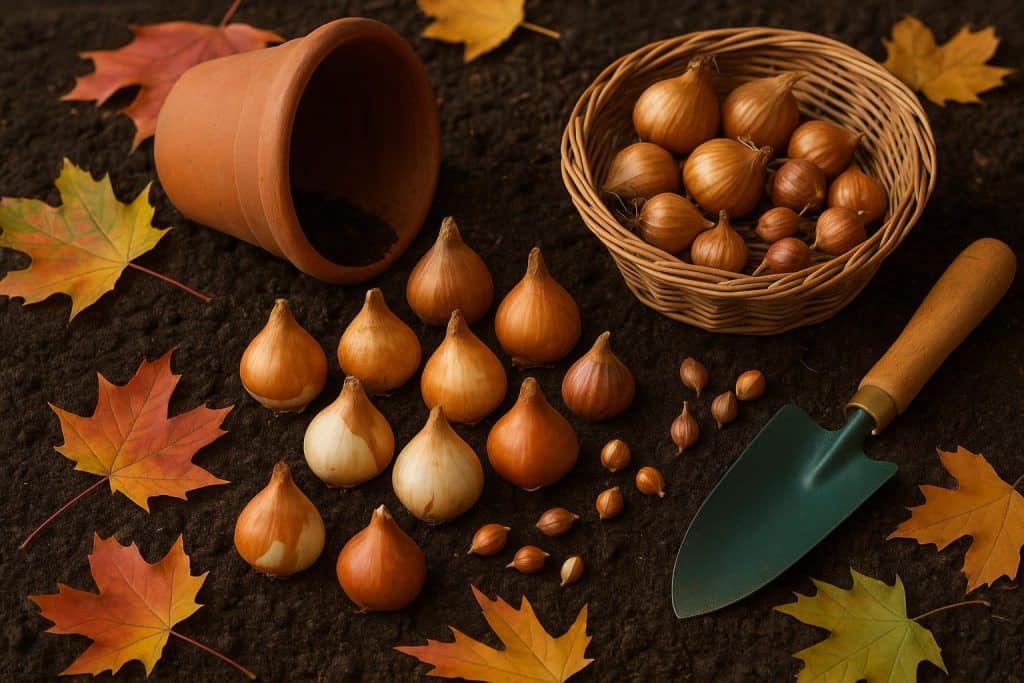Autumn is the season of preparation. While your garden begins to quiet down after summer, it’s also the perfect moment to plan for the vibrant displays of spring. Planting bulbs in autumn ensures they undergo the cold period necessary for proper flowering. By taking a little time now, you can look forward to a garden full of color, fragrance, and life as winter fades. But which bulbs should you plant, and how do you get the best results? Let’s take a closer look at some of the most reliable and dazzling choices for spring blooms.
Daffodils are a classic choice and one of the easiest bulbs to grow. Their cheerful yellow and white faces are among the first signs of spring, and they are incredibly resilient. Daffodils thrive in a range of conditions, from borders to containers, and even in naturalized areas like grassy lawns. Plant them at a depth of about three times their height and in clusters for the most striking effect. They multiply quickly, meaning you’ll enjoy larger displays year after year with minimal effort.
Tulips are another garden favourite. Available in almost every colour imaginable, tulips bring elegance and variety to any spring garden. From the tall, sleek Darwin hybrids to the more unusual fringed or parrot tulips, there is a variety for every taste. Tulips prefer well-drained soil and sunny spots, so avoid planting them in waterlogged areas. For the best results, plant them later in autumn, around November, when the soil is cooler. This helps prevent fungal diseases that can sometimes affect tulip bulbs.
For those who love carpets of early colour, crocuses are ideal. These small but vibrant flowers often bloom while frost still clings to the ground, signalling that winter is nearly over. Their purple, yellow, and white petals brighten borders, rock gardens, and even lawns when naturalized in drifts. Crocuses don’t require much space, making them perfect for gardeners working with smaller areas or those wanting to fill gaps between larger plants.
Hyacinths are a great choice if you want both beauty and fragrance. Known for their dense clusters of star-shaped flowers, hyacinths release a strong, sweet scent that fills the spring air. They work beautifully in pots near doorways or windows where their fragrance can be fully appreciated. Hyacinths prefer sunny locations and well-drained soil, and like tulips, they should be planted in the cooler part of autumn to ensure strong blooms.
Snowdrops are among the earliest flowers to bloom, often appearing as soon as January or February. Their delicate white flowers look stunning in shady areas, under trees, or along pathways. Snowdrops are hardy and low-maintenance, making them an excellent choice for beginner gardeners. Once planted, they can be left to spread naturally, creating beautiful drifts over time.
Alliums are another striking option. Known for their large, spherical flower heads that resemble fireworks, alliums add architectural interest to a garden. They come in shades of purple, pink, and white, and many varieties are tall, making them a great choice for adding height to borders. Alliums bloom later in spring, bridging the gap between early bulbs and summer perennials.
When planting bulbs, it’s important to prepare the soil well. Ensure it is free-draining, as bulbs sitting in waterlogged ground may rot. Adding organic matter such as compost can improve drainage and provide nutrients. A good rule of thumb is to plant bulbs at a depth of about two to three times their own height. Space them appropriately, but don’t be afraid to plant in clusters—groupings tend to create the most eye-catching displays.
Timing is also key. Planting too early, when the ground is still warm, can encourage bulbs to sprout prematurely. In most areas, October and November are the best months to plant. This allows bulbs to establish roots before winter sets in while avoiding early growth that could be damaged by frost.
For gardeners who want to make the most of their efforts, it’s worth considering a layered planting technique. This involves planting different types of bulbs at varying depths in the same spot. For example, you might plant tulips deepest, daffodils in the middle layer, and crocuses on top. This approach creates a succession of blooms in spring, giving you colour for longer from a single planting area.
According to resources from Garden Machinery Direct, autumn garden preparation is as much about forward planning as it is about tidying. Planting bulbs now is a proactive way to ensure your garden bursts into life as soon as the season allows. Pairing bulb planting with other autumn tasks like lawn care, pruning, and tool maintenance can help you stay ahead and make springtime gardening more enjoyable.
Ultimately, the bulbs you choose should reflect both your personal style and your garden’s conditions. Whether you want bold tulips, delicate snowdrops, or fragrant hyacinths, planting in autumn is the key to success. With just a bit of care and planning, you can guarantee a garden that will reward you with beauty and joy when spring arrives.
Angela Spearman is a journalist at EzineMark who enjoys writing about the latest trending technology and business news.
